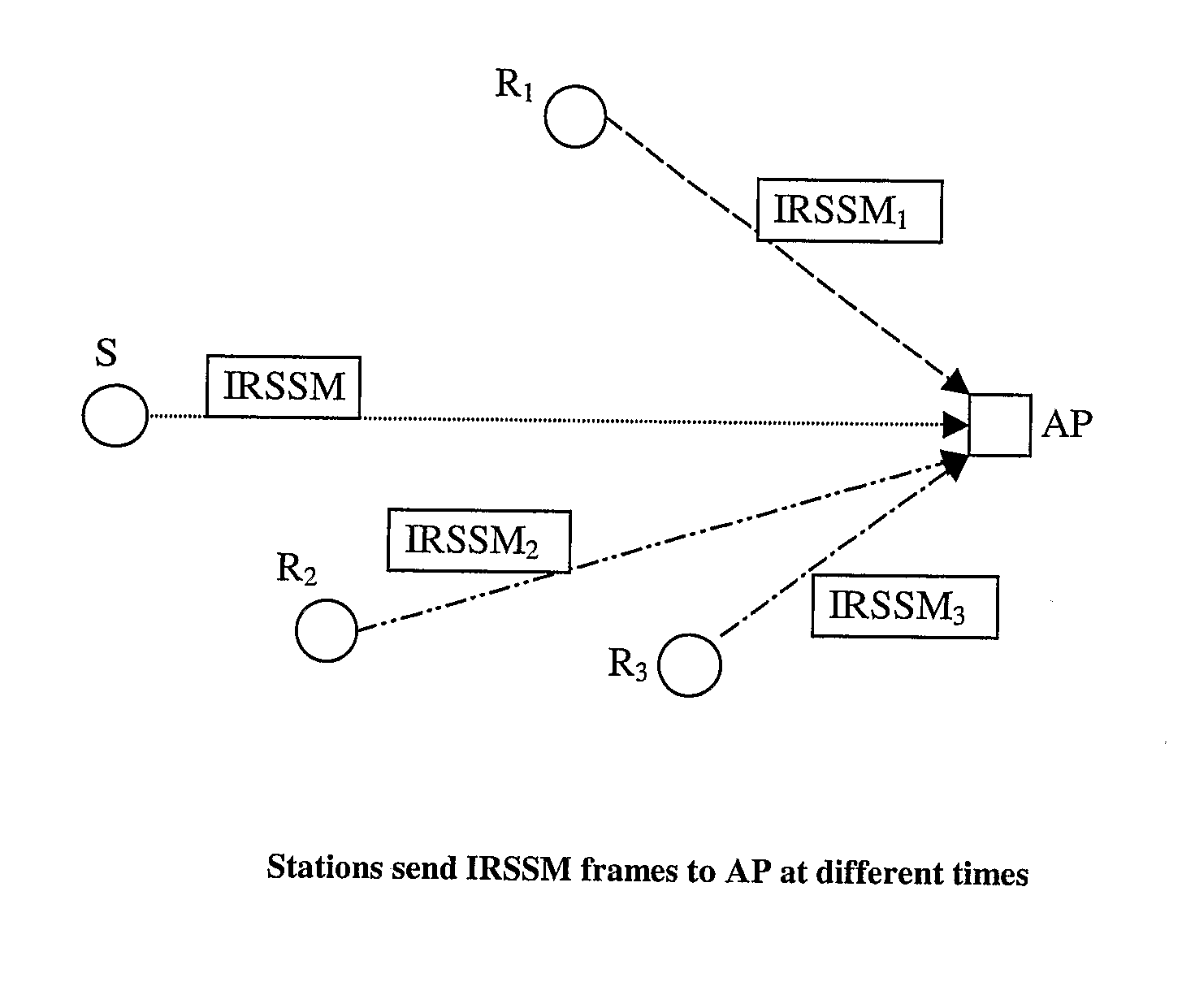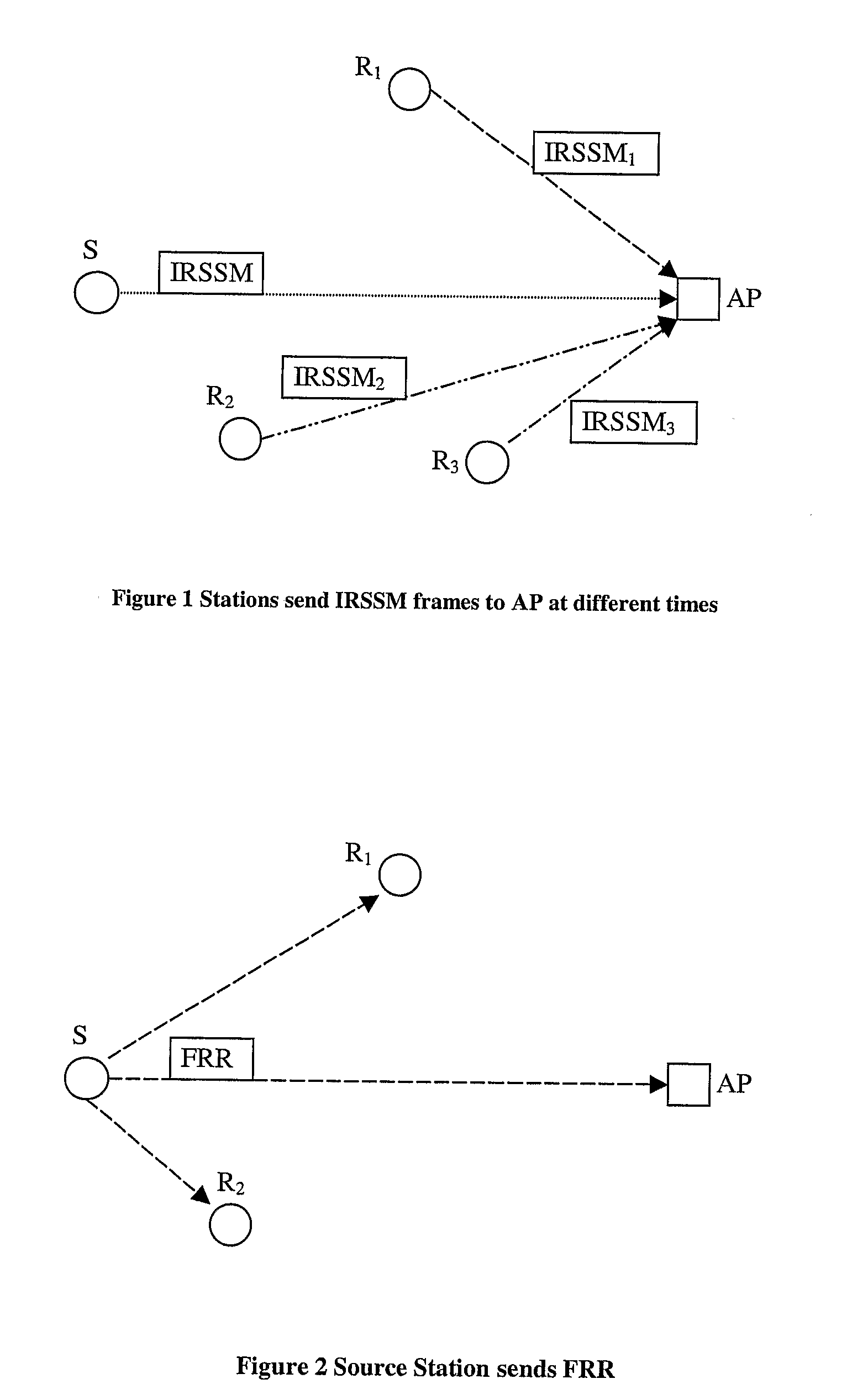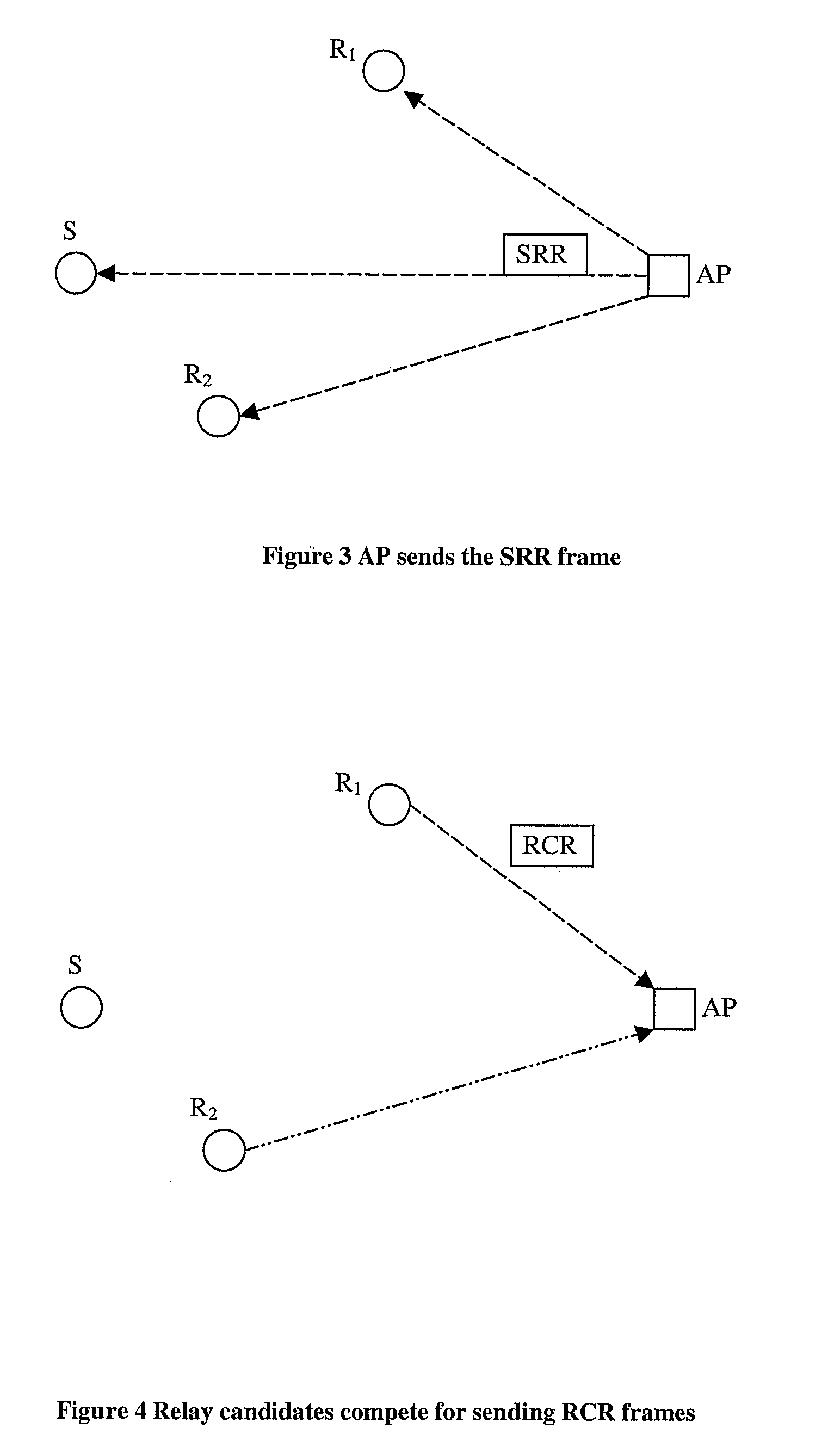Method of relayed wireless transmission
- Summary
- Abstract
- Description
- Claims
- Application Information
AI Technical Summary
Benefits of technology
Problems solved by technology
Method used
Image
Examples
Embodiment Construction
[0021]Some embodiments of the invention will now be described, by way of example, with reference to the accompanying drawings.
[0022]FIG. 1 is a schematic diagram of a wireless LAN operating according to the IEEE 802.11 standard. A base station, or access point, AP is provided, and has a radio transceiver which communicates with a radio transceiver in each of a number of terminal devices S (only one of which is, however, shown in the drawing). Also shown are relay stations R1, R2, R3. When conditions are poor, a device S (referred to as source, may transmit via a relay to the AP, rather than directly, in order to obtain a stronger signal and hence a higher data rate. In this version, the relays are dedicated relay stations, but the relay functionality could, if desired, be provided in the terminal devices S.
[0023]There is a strong correlation between path loss and the achievable transmission rate for sending data. Both distance and obstacles produce fading effects that contribute to ...
PUM
 Login to View More
Login to View More Abstract
Description
Claims
Application Information
 Login to View More
Login to View More - R&D
- Intellectual Property
- Life Sciences
- Materials
- Tech Scout
- Unparalleled Data Quality
- Higher Quality Content
- 60% Fewer Hallucinations
Browse by: Latest US Patents, China's latest patents, Technical Efficacy Thesaurus, Application Domain, Technology Topic, Popular Technical Reports.
© 2025 PatSnap. All rights reserved.Legal|Privacy policy|Modern Slavery Act Transparency Statement|Sitemap|About US| Contact US: help@patsnap.com



